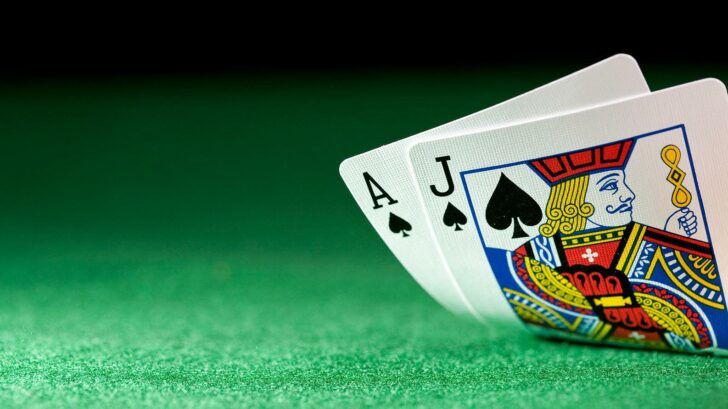Claude Shannon – A Blackjack in the Scientific Pack

Claude Shannon’s development of information theory is the basis of the modern age and he used it to cheat at roulette and make money on the stock market.
There are many things we take for granted in our oh so modern world. Microprocessors once the preserve of room sized machine in dedicates labs now litter the planet in everything from fridges to phones, and have shrunk to fit into thing you can lose down the back of the sofa. But these are not the mere developments of technology, but of a way of thinking. A way of thinking that dates back to the 1800s.
George Boole’s particular brand of logical reasoning appeared in the midst of the 19th century to have precious few engineering applications, or indeed many practical ones at all. However a hundred years later Claude Shannon would make them the basis of all those modern marvels we take for granted, and along with others would turn it to their advantage.
History has produced a great many people whose singular effect on the world around them has made them seem of such importance that their achievements are separated from them. If there had been no Genghis Khan, it is often said, someone else would have done as he did. He just happened to be in the right place at the right time in the right circumstances.
Claude Shannon’s unique view of the world of information, and the resulting digital age in which we all live so blithely means that is can easily be argued no one else would have filled a void he might leave, and that the world today would be vastly different if it weren’t for this one man from Gaylord and his theories on information, its transmission and storage.
~ Strange Scientists of the Sixties and Blackjack ~
Claude Shannon was by no means an ordinary man, he wasn’t even an ordinary genius with a hands-on attitude to engineering and mathematics that saw him build weird and wonderful mechanical juggling machines, a programmable chess computer and Theseus, an electric mouse that showed some of the first glimmers of artificial intelligence.
Along with gambler Edward O Thorp, whose idea of a good time was winning at blackjack, and part-time gunslinger John Larry Kelly Jnr, whose theories of probability shaped Ed’s gambling strategies, Shannon not only theorized but proved his theories and theirs in practical experimentation in the real world. Sometimes with beneficial results not just for mankind’s future but also his own wallet.
~ The Wearable Computers of Blackjack Winners ~
Some of these experiments were undertaken in company of his wife (a numerical analyst herself) on trips taken with Edward O Thorp to Las Vegas. With one rigged up like something out of Spy-Vs-Spy and the other making the bets and the money it does seem like a slightly bad blackjack movie plot, right down to the technical disasters. One can only wonder what his wife, Betty, thought of it all.
Wearable computers might only now be adorning the wrists of early-adopters and techno-hipsters as technology continues to shrink, but the concept has been around much longer. The modern era has seen them develop from a female fashion accessory through military necessity to the plaything of mad scientists at the roulette wheel.
~ In The Logical Shadows Of Cryptography ~
The computer used by two highly respected mathematicians to cheat at roulette during the early 60s might have only been the size of a packet of cigarettes (and indeed hidden inside one) but it owed more than a little to the wartime experiences of Shannon and his colleagues in the world of code-breaking. It was perhaps Alan Turing’s universal machine concept that made it possible at all.
The wartime necessity for accurate communication of information led to some of the most profound paradigm shifts in technology away from signal modulation and towards data coding and decoding. It would be these changes in thinking that would lead to the computers we know and love today, and indeed led Edward O Thorp and Claude Shannon into blackjack history.
~ The World Of Information and Game Theory ~
Whilst microprocessor based computers are a direct descendant of the huge analogue machines that Babbage would have recognized, the difference between the two is a vast sea change of thinking. The division of all information, not just mathematical information, into bits that can be compared in a quantifiable, scaled manner was revolutionary. The manipulation of information in such a state made transmission and storage far simpler.
Shannon’s information theory was developed further into what is now called Game Theory where the best possible outcome is calculated from a set of variables that leads to results regardless of what information is or is not known about the opponent’s choices or aims. These proved decisive in blackjack strategies and went on to be useful in Wall Street too.
~ From Las Vegas To Wall Street ~
John Larry Kelly Junior never made money out of the theories that he himself put forward regarding the manner in which decisions could be made despite a lack of some information pertaining to that decision. His criterion is the basis of card counting and sensible investment strategy. Maximizing the utility, or getting the best result possible, from a set of variable circumstance.
Claude Shannon and Edward O Thorp used the Kelly Criterion to make themselves a fortune at the blackjack tables and then used it to invest in stocks and shares. Their success at which has led prominent billionaires such as Warren Buffett to follow their example and invest proportionately based on the Kelly formula. The mathematics of both casino and Wall Street being anything but dissimilar.




